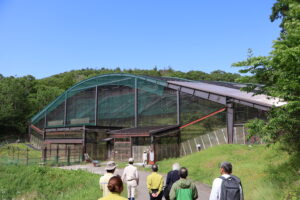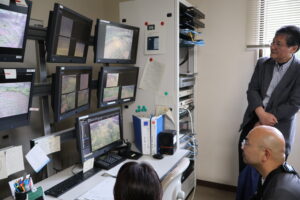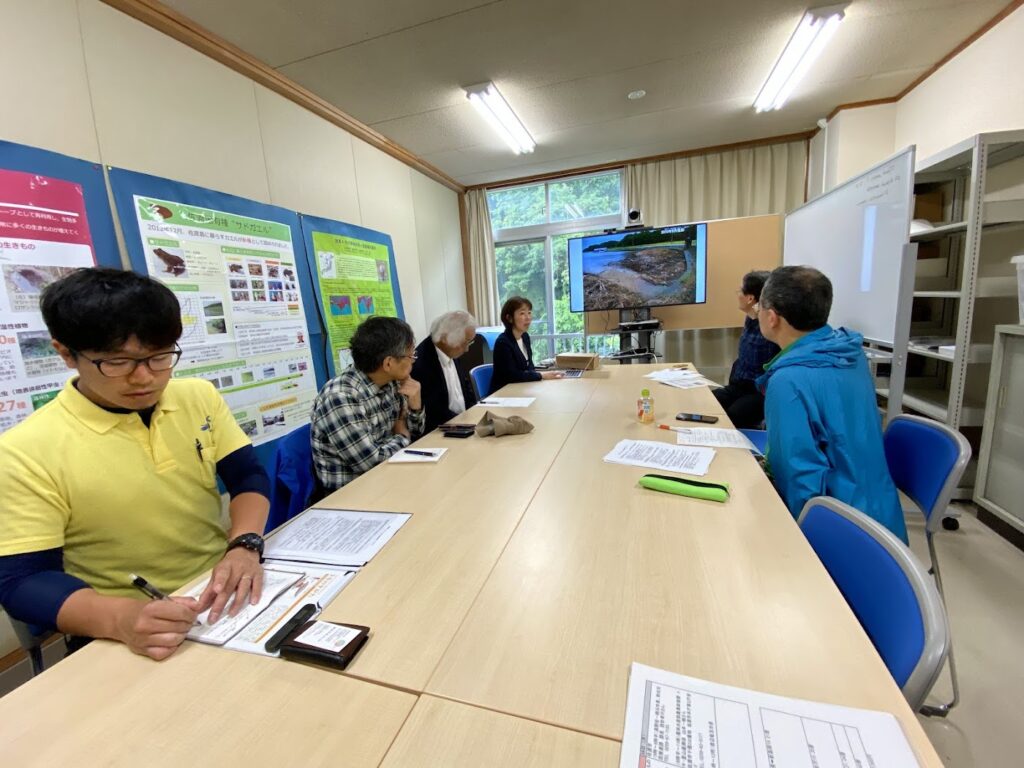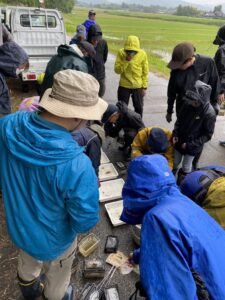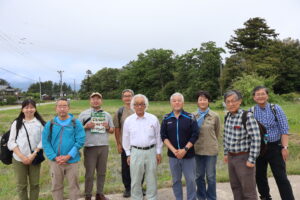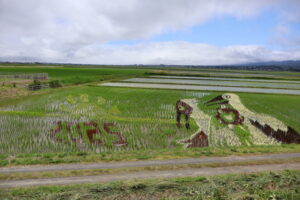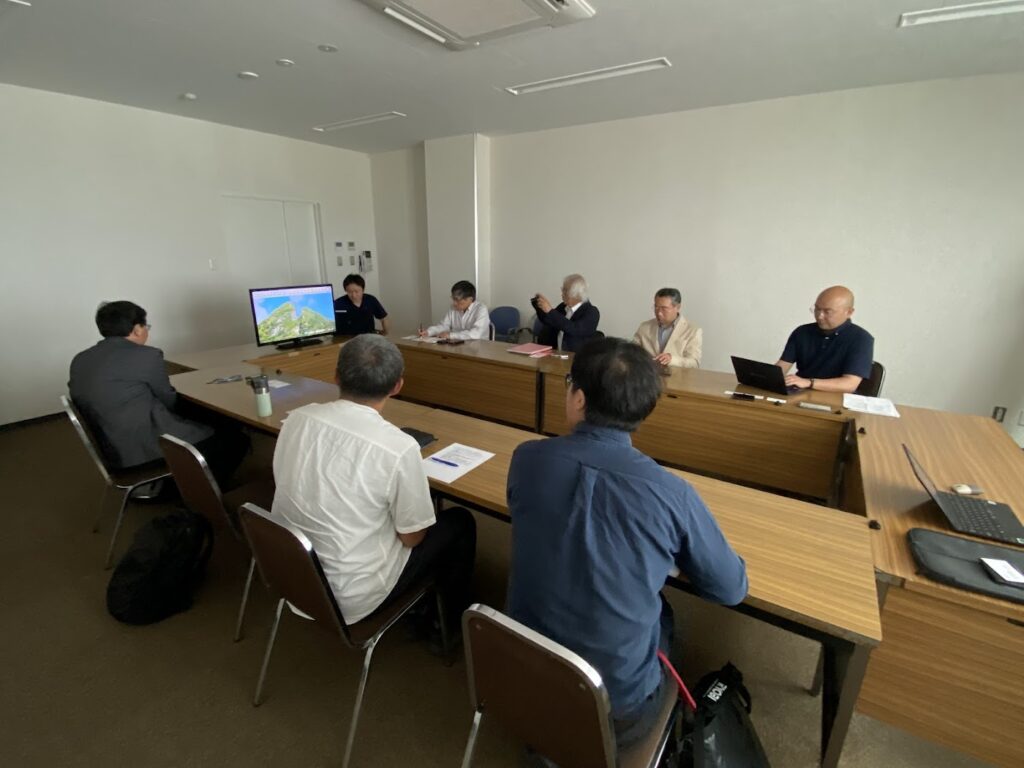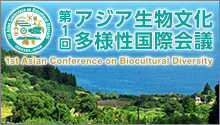Sorry, this entry is only available in 日本語.
Noto:アーカイブ
ごっつぉ草紙 Red data cook book
2020年12月24日
Establishment of the Noto Biodiversity Society
2016年02月23日
Five years have passed since “Noto’s Satoyama and Satoumi” was designated as a Globally Important Agricultural Heritage System (GIAHS) by the Food and Agriculture Organization of the United Nations (FAO). OUIK has supported the revision of action plans and monitoring activities after the GIAHS designation.
Biodiversity monitoring activities in Noto, which are carried out in an area that encompasses four cities and five towns, focus on surveys of living creatures conducted independently by municipal governments and private organizations; a unified monitoring system to disseminate information related to biodiversity has not yet been developed.
In response to this situation, “Noto Biodiversity Society” was established by OUIK and Kanazawa University Satoyama-satoumi Project to contribute to Noto GIAHS through monitoring of biodiversity and related activities. The members of this society include people who belong to private organizations that promote the preservation of biodiversity and environmental education in the region, as well as researchers working in laboratories related to biodiversity in Noto.
On January 23, we announced the establishment at a meeting of Noto GIAHS Utilization Executive Committee and Noto GIAHS Promotion Council, in which OUIK participates as an observer. Through surveys of living creatures and related activities, the society will contribute to the preservation and monitoring of biodiversity and dissemination of information, in cooperation with the Council.
Official report of International Forum Series to Commemorate One-Year Anniversary of the 1st Asian Conference on Biocultural Diversity[Electronic Version]
2018年12月19日
After one year since the 1st Asian Conference on Biocultural Diversity, a series of 2 inernational forums were held to explore the measurements to further promote the Ishikawa Declaration with international initiatives and East Asian partner.
International Forum Series 1 (4/10/2017)
Biocultural diversity & satoyama: Effort towards societies in harmony with nature around the world.
International Forum Series 2 (15/10/2017)
Preserving Biocultural Diversity for Future Generations:Partnarship of East Aisan Countries.
OUIK Biocultural Diversity Series #4 [Learning About the Satoyama and Satoumi of Hokuriku Region from Maps]
2018年07月10日
Map information compiled by various scales to learn about the link between anthropogenic activities and physical environment within Hokuriku Region.
2-Day Noto programme held at OSAKA EXPO
2025年09月02日
On August 27, 2025, the Osaka-Kansai Expo program, “CONNECTING YOU To NOTO: Learn About Biodiversity (Resilient Creatures) with Noto Elementary School Students!,” took place at the Junior SDGs Camp(Sustainable Dome) venue on the Expo grounds. The Ministry of Environment and the United Nations University Institute for the Advanced Study of Sustainability (UNU-IAS) organized this event.
At the beginning of the program, Sayako Koyama, researcher at the United Nations University Institute for the Advanced Study of Sustainability Operating Unit Ishikawa-Kanazawa (UNU-IAS OUIK), explained the concept of biodiversity by giving examples of creatures from the Noto Peninsula. Participants learned that living things, the environment, and human life are interconnected and mutually supportive. Koyama then discussed the damage caused by last year’s Noto Peninsula earthquake and heavy rains.
Next, fifth- and sixth-grade students from Yanagida Elementary School in Noto Town, Ishikawa Prefecture, presented the results of their surveys on the water quality and wildlife of the Machino River. They had been conducting these surveys since before the disaster. The students shared their observations on post-disaster changes in the ecosystem, wildlife resilience, and the impact of environmental shifts on the food chain.
Following the elementary school student’s presentation, an online exchange session was held with Sakana-kun, who joined from Tokyo. He discussed the fish he observed during his visit to Noto and the challenges that creatures face due to earthquakes, heavy rains, climate change, and environmental issues.
Finally, the children in Osaka venue asked Sakana-kun questions. Sakana-kun drew pictures of fishes and explained their characteristics in detail, which the children listened to with great interest.
The participants had a valuable opportunity to learn about Noto’s wildlife and the situation after the earthquake.
We also received cooperation from the Institute of Noto Satoumi Education and Studies, and the Noto Marine Center in planning this program.

The day 2, on August 28, the session titled “CONNECTIN YOU to NOTO: Learning Disaster Prevention and Recovery from Affected Areas with Noto High School Students!” featured presentations by five first- and second-year Ishikawa Prefectural Nanao High School students.
After Koyama gave a presentation about the livelihoods, traditional culture, and daily life in Noto’s satoyama and satoumi areas, the high school students shared their experiences of the hardships they endured in the region and their feelings during the 2024 Noto Peninsula Earthquake and heavy rains. The students also presented their research on the changes to the local environment after the earthquake and heavy rains. They stated, “We realized that the current state of our environment and way of life is not permanent.” They also discussed the importance of water and shared their experience of going without water for nearly five months. They conveyed the idea that preparedness can minimize damage. Their appeal to learn from disasters and pass that knowledge on to future generations left a strong impression on the participants.
After the presentations, participants ranging from children to adults had group discussion. Inspired by the Noto high school students’ presentations, the participants discussed disaster prevention approaches and daily preparedness in their own regions. Some participants who had experienced the Great Hanshin-Awaji Earthquake shared their memories of that time. These dialogues fostered empathy and learning across generations and regions.
Finally, Shinobu Yamaguchi Director of UNU-IAS reflected on the programme. She stated, “Recent disasters, such as heavy rains and forest fires, are deeply linked to climate change and can occur anywhere in the world—not just in Noto or Japan. That is precisely why bringing together diverse people across generations, positions, and regions to learn together is the key to improving society”.
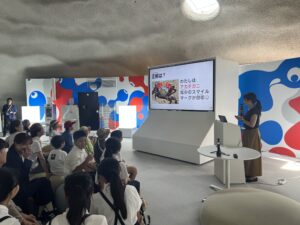
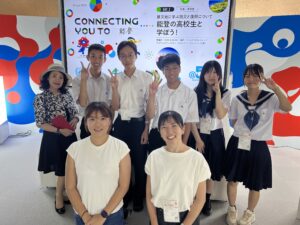
Although centered on the theme of disasters, this program served as a forum for shared reflection that transcended regional boundaries. It connected the past, present, and future, starting with Noto’s experiences. It offered an educational experience worthy of the international stage of the World Expo.
OUIK Biocultural Diversity Series #3 Noto Satoumi Movement-Passing on wisdom of living with the sea
2016年11月01日
It documents discussions and article contributions by speakers who participated in the OUIK Noto Satoumi Lecture Series held in 2015. This lecture series highlighted the Noto Satoumi Movement, which emphasizes local, traditional wisdom of living with the sea, and led in part to the Noto Peninsula’s designation as a Globally Important Agricultural Heritage System (GIAHS) in 2011.
The Noto Satoumi Movement aims to establish the Noto region of Ishikawa Prefecture as a leading center for satoumi research and conservation efforts on the Sea of Japan, as well as to promote a deeper awareness both in and outside of Japan of the concept of Satoumi, the charm of Noto’s satoumi and its related livelihoods, and the importance of satoumi conservation. The booklet is available from here
Learning from Sado’s Experience and Considering Noto’s Future: Field Visit Report
2025年07月24日
Preparations for releasing the crested ibis on the Noto Peninsula in 2026 have been underway since before the earthquake. Following the earthquake and the heavy rain of 2024, the release of these birds is expected to symbolize the region’s recovery of satoyama and satoumi. However, since the situation in Noto still remains difficult, it is important that the project be carried out as a sustainable initiative that meets the wishes and current conditions of the local communities.
The Noto GIAHS (Global Important Agricultural Heritage Systems) Biodiversity Working Group has been developing a mechanism for citizen-participatory surveys of living creatures and implementing them with local residents. From June 13 to 16, 2025, eight members of the working group visited Sado to learn about citizen-participatory surveys of living creatures and efforts to release ibises that have been conducted on the island for many years.
The release of crested ibises began in Sado in 2008, and the population now exceeds 500. Additionally, the “Toki to kurasu sato” certification program, which promotes rice production friendly to living creatures, as well as surveys of living creatures in rice paddies, conducted in collaboration with farmers and children, are implemented as ongoing community-rooted activities. We visited Sado to learn about its efforts and apply them to future sustainable biodiversity conservation and local revitalization in Noto.
Learning from the Sado Ranger Office, Ministry of the Environment, and Sado Japanese Crested Ibis Conservation Center, Niigata Prefecture
Mr. Takashi Kitahashi and Ms. Kanako Ikikame from the Ministry of the Environment, as well as Mr. Takashi Oya and Ms. Kiyoko Inoue from Niigata Prefecture, shared the story of breeding and training of crested ibises prior to their release. At the pre-release training facility, we learned how to acclimate the birds to people and agricultural machinery, as well as the measures taken against predators. We were also shown the remote monitoring system for the breeding cages. It was impressive to see the Ministry of the Environment and Niigata Prefecture work closely together in the same facility which reaffirmed the importance of collaboration among the national government, local governments, universities, and the private sector.
Discussion with Prof. Mitsuyo Toyoda
Professor Mitsuyo Toyoda from Sado Island Center for Ecological Sustainability Office for Community Design, Niigata University, introduced the efforts made on Sado to build consensus among residents and support their activities. Although some fishers from Lake Kamo where the Tenno River flows into, expressed their opposition regarding the nature restoration of the river, through neutral facilitation and careful discussions, they have reached a consensus and are now working together to create reed beds at Lake Kamo and provide environmental education for children. Their story of building a good relationship through consensus building was impressive. We realized the importance of taking a sociological approach, like Professor Toyoda’s, to carry out nature restoration efforts, such as returning the crested ibis to the wild. This approach connects various stakeholders, such as the government and citizens, and carefully picks up the voices of local residents.
Visit to the Tenno River Nature Restoration Site
Under the guidance of Mr. Toru Itagaki, Chairman of Council of Wetland for Crested Ibis, we visited the Tenno River nature restoration site. Efforts are underway to widen the river channel, create a more natural river and wetland environment that can be used as a feeding ground for the crested ibis. Construction is currently underway and will be completed in a few years. The installation of a fishway made from an ate tree, which is also found in Noto, demonstrates the ingenuity of utilizing local resources.
However, both Sado and Noto are facing labor shortage. There is an urgent need to establish a long-term system for maintaining and managing these natural environments. In depopulated areas, we felt it was important to consider sustainable methods of nature restoration taking into account the maintenance and management needs.
However, both Sado and Noto are facing labor shortage. There is an urgent need to establish a long-term system for maintaining and managing these natural environments. In depopulated areas, we felt it was important to consider sustainable methods of nature restoration taking into account the maintenance and management needs.
Institute for Sado Ikimonogatari : Learning from Creature Survey Efforts
First, the Institute for Sado Ikimonogatari arranged for us to participate in one of the twice-yearly (June and August) surveys of creatures, which is one of the requirements for “Toki to kurasu sato” certified rice. We participated in the June survey by the Nagaune Producer’s Association, Agricultural Cooperative which has produced certified rice since the inception of the certification system. Despite the drizzle, many residents, including children, gathered to search for living creatures. We easily found loaches, tadpoles, frogs, dragonfly larvae, and many other creatures. From a distance, crested ibises searching for food could be seen in the neighboring rice paddy.
The next day, we interviewed Mr. Katsumi Oi and Dr. Asami Oishi from the institute about their work. They showed us their original illustrated field guide “Illustrated field guide of creatures in Sado paddies” and shared with us their challenges and the living creature surveys they have been conducting with farmers and children. Although they have not been able to make full use of the data they collected on the creatures, they mentioned that they are valuing the experience of getting to know the creatures more than the data itself. They also shared that the institute is facing challenges to continue its activities due to budget cuts and other factors. We were reminded of the need for sustainable organizational management and the difficulties involved.
Learning from Saito Farm’s Practices
Under the guidance of Mr. Shinichiro Saito, we visited the “Toki to kurasu sato” certified rice paddies. We learned about the various efforts they have made to create rice paddies for the crested ibis. These efforts include paddies where rice paddy art has been created for the past nine years, as well as naturally cultivated rice paddies, farmed without any fertilizer or pesticides, where fishways and ditches have been created, and where weeding is being experimented with using a duck robot.
We learn that the “Fuyumizu tambo” (winter-flooded rice paddies), which originated on the Pacific Ocean side of Japan, are not suited to the environment of Sado on the Japan Seaside, which has high levels of precipitation. He mentioned that it is better to keep the water level low, just enough for it to accumulate in the wheel tracks. This benefits both the quality of the rice and the crested ibis, which has short legs. Mr. Saito’s trial-and-error experience will be very helpful for Noto, which has a similar climate to Sado.
Mr. Saito said, “Efforts will not last long if we only provide economic incentives to farmers.” He emphasized the importance of fostering farmers’ interest in living creatures and crested ibises.
Discussion with Sado City Representative
First, we spoke with Mr. Koichiro Takano, former mayor, and Mr. Takayuki Nishimaki, who was in charge of branding and sales channel development for ibis rice at the time. They told us about the background of the decision to release the ibis on Sado and their rice branding efforts. We learnt that the decision to release the crested ibis was made during a time when Sado rice was severely damaged by a heat wave caused by a typhoon. This event also coincided with a significant turning point in the merging of municipalities. It was impressed by what they said about the importance of cooperating with JA (the Japan Agricultural Cooperatives) to realize branded rice in that situation.
Next, Mr. Nagao Nakamura, Mr. Kazuki Yamamoto, and Ms. Mako Igarashi from the Agricultural Policy Division of the Agriculture, Forestry and Fisheries Department introduced the status of certified rice distribution and their collaboration with Coop Deli. They also introduced educational activities for children through the “Sado Kids Living Creatures Survey Team” conducted in cooperation with the Institute for Sado Ikimonogatari. Also, they introduced the efforts being made to provide certified rice in the school lunches.
More than 30 children participate in the “Sado Kids Living Creatures Survey Team” every year. They also introduced a case of a child who participated in this program became a city officer and now actively working in the community. This drew attention to the program as an effort to nurture the next generation and foster a sense of community attachment. Additionally, with regard to securing human resources to serve as instructors for the survey of living creatures, they mentioned about the instructor system implemented more than 10 years ago. Such a system seems effective in developing human resources, as those who participated in it are still active as instructors.
Lastly, we interviewed Mayor Ryugo Watanabe. He introduced the long history of efforts to release the crested ibis and branding of the certified rice. Sado Koshihikari rice is already a popular brand and is in high demand. For this reason, “Toki to kurasu sato” certified rice, which further incorporates farming methods that nurture living creatures, is sometimes sold under the name Sado Koshihikari to meet the demand for the latter. Therefore, in these cases, farmers are not fully compensated for their additional efforts. For this reason, Sado City is now promoting the sale of the certified rice through hometown tax payments. The mayor also emphasized the importance of engaging in careful dialogue and collaborating with a variety of stakeholders, including the JA and farmers.
During this visit to Sado, we experienced the wide range of efforts to return the crested ibis to the wild, as well as the passion of those who support these efforts. We believe that their experience on Sado is very important to us in Noto as we move forward on our journey to release the birds, coexist with nature, and maintain agriculture in the region. As we make progress towards recovery, we hope to work together with local people to think about a better relationship between people and nature.
This study visit was partially supported by the Taisei Corporation Public Trust of Funds for Natural and Historic Environment.
Survey of living creatures in satoumi at Komaki Boat Moorage, Nanao City
2024年10月31日
2024/10/25
Following the recent earthquake, there were concerns about the feasibility of this year’s survey. However, on October 25, 2024, sixth-grade students from Nakajima Elementary School in Nanao City successfully completed the Survey of living creatures in satoumi. The event was organized by Nanao City, with support from specialists in the field, including Mr. Arakawa (Noto Marine Center) and Ms. Koyama (Researcher, UNU-IAS OUIK).
Ms. Odake from the Nanao City’s Agriculture, Forestry, and Fisheries Division began the event by welcoming everyone. Afterward, Mr. Arakawa, provided an overview of the survey methods and explained about safety precautions. The students were split into five groups, and equipped with the necessary tools, they began their survey. Using box goggles and nets, they set out in search of various creatures. Some children crawled on all fours, striving to catch crabs hiding between the stone steps, while others became so absorbed in their exploration that they waded waist-deep into the water. When the time was announced to wrap up their collecting, some students voiced their disappointment saying, “Wait, do we have to stop?”, indicating they were eager to continue their search for more creatures.
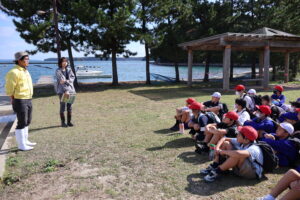 |
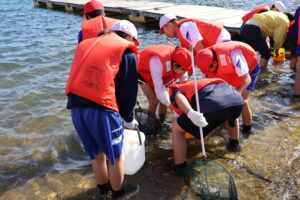 |
Next, it was time for species identification. The species collected were observed separately from seaweed. The students documented the organisms they found on the worksheets and newly created complemented materials by the Noto GIAHS Biodiversity Working Group. Mr. Arakawa explained about the species found and that creatures from the same family of Shitadami shells are edible. He also explained that there is a type of shellfish called Sugai (Lunella correensis), which looks similar to Shitadami but has a different shell lid shape. Crabs found by each group were gathered and placed in a single container for comparison. Two different types of crabs, Isogani (Hemigrapsus sanguineus) and Gazami (Portunus trituberculatus), were observed, revealing that the shape of the fifth leg on the Gazami crab is flattened, making it well-suited for swimming.
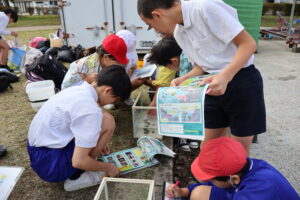 |
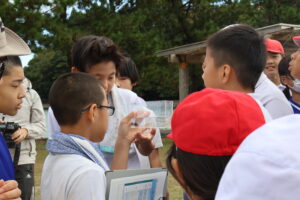 |
At first glance, an artificial coastal shore seemed empty, but when we took a closer look, students were able to find a variety of marine life there. Due to the effects of the earthquake, children may have fewer opportunities to go outside and connect with nature. However, OUIK hopes that this survey has helped the students appreciate the richness and charm of their local coastal environment. We also hope that they will continue deepening their understanding of how their daily lives are connected to the sea. Under the clear autumn sky, the shining smiles of the children were truly the most memorable sight of all.
JFUNU: Donations for the 2024 Noto Peninsula Earthquake Relief
2024年04月12日
At UNU-IAS OUIK, we are working towards the swift restoration of daily life and activities in the communities alongside the satoyama and satoumi of the Noto Peninsula, as well as aiming for a creative reconstruction that leverages the unique characteristics of the Noto region. Under close coordination with local governments and stakeholders, we are striving to grasp the needs of the region while advancing collaborative efforts with the local community.
To better support the specific needs of the region, with the assistance of the Japan Foundation for United Nations University (JFUNU), we have initiated a fundraising program.
JFUNU is a public interest corporation established in 1985 by individuals, companies, and organizations in Japan to support the activities of the United Nations University. It operates an office within the United Nations University headquarters facility in Shibuya, Tokyo, supporting the activities of the university and its students.
Donations received through this program will be fully allocated to organizations working on sustainable regional restoration and reconstruction in this area, focusing on leveraging the satoyama and satoumi, for the benefit of those affected by the earthquake.
We sincerely appreciate your cooperation and support.
How to donate?
1. Please fill in the donation application form at the URL below.
Donation Application Form URL:https://forms.office.com/r/ucR1p6GghH
2. Please transfer the funds to the account below.
From Japan:
MUFG Bank Ltd. (Financial Institution Code: 0005)
Shibuya Branch (Branch Number: 135)
Account #: 2872951 (Ordinary Account)
Account Name: “Zai Kokurendaigaku Kyoryokukai Saigai Fukko Shien Bokin”
* Please note that you will be responsible for the bank transfer fee.
From Overseas:
Beneficiary Bank: MUFG BANK, LTD.
SWIFT Code: BOTKJPJT(BOTKJPJTXXX)
Beneficiary Account Number: 135- 2872951
Beneficiary Name: JFUNU
Payee’s Address: 5-53-70 Jingumae, Shibuya-ku, Tokyo 150-8925, JAPAN
TEL: 81-3-5467-1369*This account is only for JPY Denomination. Donation in other currencies will be automatically converted to yen in Japan side.
*Please note that you will be responsible for the bank transfer fee.
Initiation of Research on the Use of Well Water and Spring Water
2024年03月28日
The Noto Peninsula earthquake that occurred on January 1, 2024, caused extensive damage over a wide area, isolating many communities due to landslides that disrupted roads. Additionally, essential lifelines such as water and electricity were interrupted in numerous regions. Particularly in municipalities in the Oku-Noto area and Nanao City, prolonged water supply disruptions have been experienced, with many areas still without water nearly three months after the earthquake.
Amidst this ongoing situation, research associate Koyama has begun an investigation into the use of water sources within the community, including wells and springs.
Through interviews with local residents and on-site surveys, there are plans to explore ways to utilize water for building a resilient community in the face of disasters.


